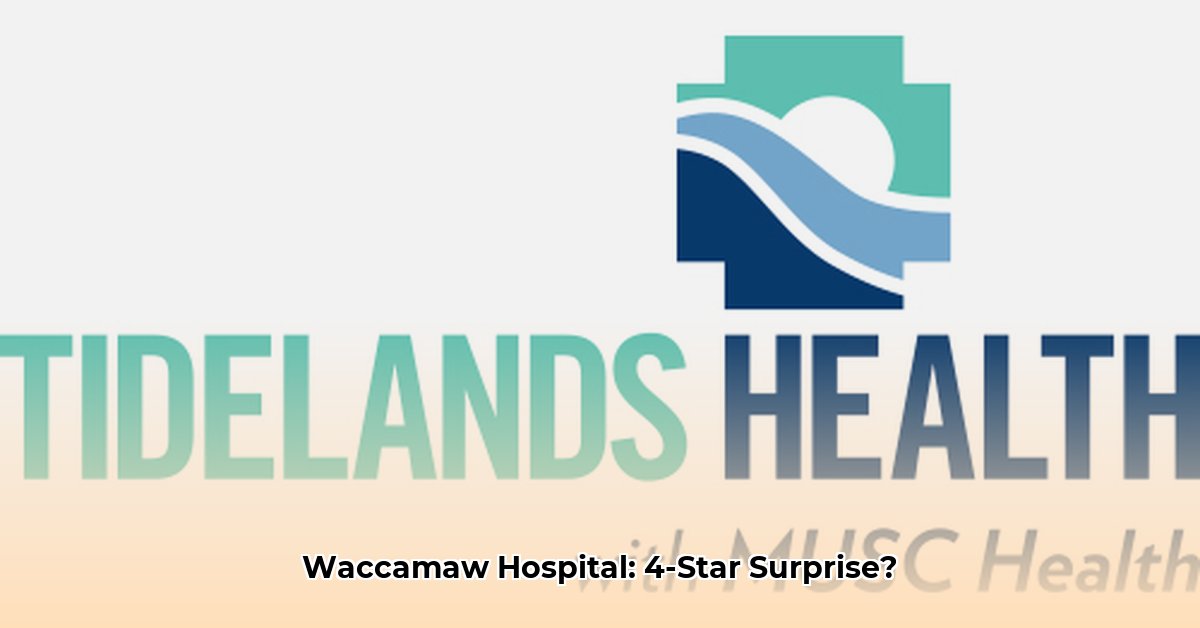
A 4-Star Rating: A Detailed Look at Tidelands Waccamaw Community Hospital
Tidelands Waccamaw Community Hospital (TWCH) in Murrells Inlet, South Carolina, boasts a 4-star rating. This positive assessment suggests performance exceeding national averages across various key patient care metrics. However, the available data offers a limited perspective, hindering a truly comprehensive evaluation. This review aims to analyze the available information, highlighting both strengths and limitations, while emphasizing the critical need for greater transparency in hospital performance reporting.
Positive Aspects and Interpretations
The 4-star rating, while not fully explained, suggests TWCH performs well in treating common medical conditions. This likely translates to positive outcomes, such as shorter wait times for common procedures, fewer post-operative complications, and higher patient satisfaction rates. However, without detailed data on specific performance indicators, such as readmission rates for heart failure or mortality rates following surgery, these positive inferences remain speculative. The rating serves as an encouraging initial sign, yet a more comprehensive examination demands a deeper dive into the underlying data. How can we be sure these positive outcomes are consistent across all patient demographics?
Data Limitations and Their Impact
The lack of detailed, publicly available data significantly hinders a thorough assessment of TWCH's performance. The 4-star rating, while promising, lacks the granularity necessary to identify both strengths and areas for improvement. What specific metrics contributed to the rating? Were certain aspects weighted more heavily than others? And were there any areas of underperformance? This absence of transparency limits the ability to compare TWCH to other hospitals of similar size and service offerings effectively and restricts the scope of meaningful analysis. What elements of patient care are missing from this rating, and how might those impact overall quality?
Stakeholder Analysis and Recommended Actions
The limited data presents a challenge for a variety of stakeholders. This section proposes specific measures to enhance data collection, improve transparency and ultimately improve healthcare quality.
TWCH Administration: Proactive publication of detailed quality metrics, investment in robust data analytics technologies, and the implementation of ongoing patient feedback mechanisms are essential. Transparency initiatives and proactive engagement are key to building public trust.
Researchers and Analysts: Independent review and research are hampered by limited data. Advocacy for open data access, coupled with studies correlating hospital ratings with specific patient outcomes, are necessary to fully understand the 4-star rating's implications.
Patients and Families: Accessing clear, concise information about hospital quality is crucial for informed decision-making. Actively seeking detailed quality reports from hospitals, comparing performance across multiple facilities, and providing direct feedback to hospitals are vital steps.
Regulators (e.g., CMS): The current system requires stronger reporting mandates from hospitals. Standardized metrics for evaluating healthcare quality, coupled with regular audits, will lead to more consistent reporting and improved accountability.
Risk Assessment: Addressing the Unknown
The limited data presents significant risks. The most concerning is the inability to conduct a thorough risk assessment. Unidentified weaknesses could impact patient safety and outcomes. While the 4-star rating suggests overall competence, it doesn't eliminate the possibility of critical deficiencies in specific areas. This lack of data hampers opportunities for improvement and complicates comparisons with other institutions. What unseen risks are associated with this limited dataset, and how might those impact the hospital's future performance?
Conclusion: A Call for Transparency
TWCH's 4-star rating offers a positive initial impression, but the lack of detailed, publicly available data significantly weakens the overall evaluation. While the rating suggests positive performance in some regards, a complete understanding requires more transparent reporting. Improved data transparency is not just about satisfying regulatory requirements; it's about enhancing patient safety, improving healthcare quality, and fostering greater trust in our healthcare system. The call for comprehensive data release benefits all stakeholders.